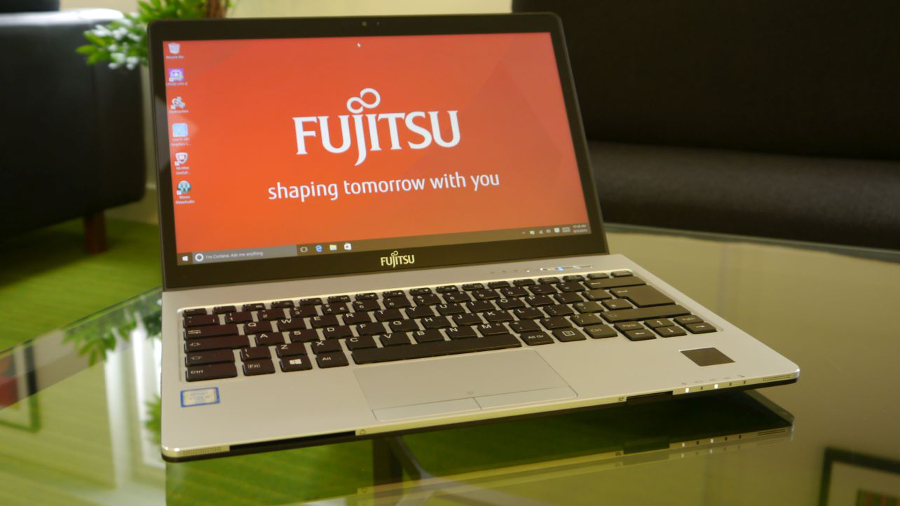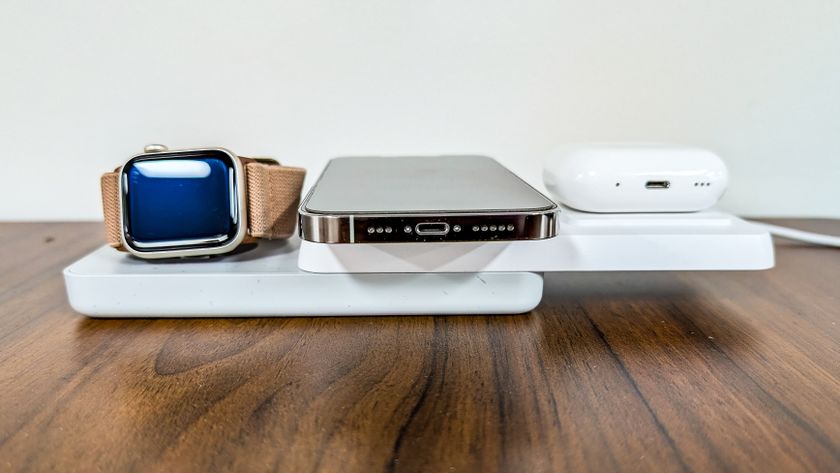Early Verdict
Fujitsu has a winner on its hands, with the S936 offering excellent performance along with some stunning expansion capabilities and shockingly good battery life, all of which makes it a great candidate for demanding businesses.
Pros
- +
Lengthy battery life
- +
Impressive performer
- +
Exceptional expansion capabilities
- +
Portability
Cons
- -
No need for a battery cover
- -
A bit pricey
Why you can trust TechRadar
Launched at the beginning of 2016, the Lifebook S936 sits, together with the U904, in a category that Fujitsu describes as notebooks with "ultimate features and stylish design", destined for professionals on the move looking for products that combine looks with substance.
Prosaically though, it's essentially a more refined version of the Lifebook E736 that we reviewed not so long ago.
As expected from a laptop for which the cheapest version will set you back about £1,000 (around $1,340, AU$1,740), this is a model that looks and feels premium. Its main rivals include the ThinkPad T460s series, the Dell Latitude E7440 and the HP Elitebook 1040 G3.
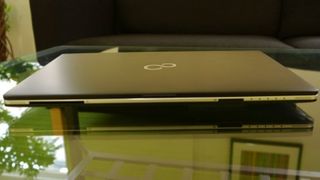
The S936 uses the same magnesium/aluminium combination for its chassis but manages to keep the weight down to only 1.19kg (our model weighed in at 1.42kg thanks to an optical drive and the touch display).
What came as a surprise though was how chunky it is – at its thickest, this notebook is a whopping 26mm thick, which pushes it outside the minimum requirements to be called an Ultrabook. At last, a vendor that doesn't compromise!
Another area where Fujitsu has trumped the competition is connectivity and expansion capabilities.
Unlike many of its competitors and despite its weight, Fujitsu managed to include a free memory slot that allows the owner to upgrade the memory to 20GB of DDR4 RAM (4GB of memory is soldered on the motherboard) simply by removing one screw and one flap.
This is still a far cry from the 32GB that the E736 could take thanks to two free slots, but it is the only major step down with this model.
We're puzzled by the fact that engineers have managed to cram in a modular bay that allows you to shove in a secondary battery, a hard drive or an optical drive; an example of where modularity works in an enterprise setup.

When it comes to ports, there's a GbE port, a legacy VGA one, and HDMI port, three USB 3.0, an audio connector and a card reader. It's a shame about the lack of a DisplayPort though which would have made this machine 4K friendly.
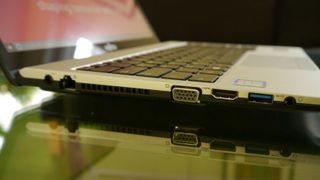
Servicing the laptop is a fairly mundane operation. There are a dozen screws that need to be removed – some of which are well hidden – and all the important components are well in sight.
Because Fujitsu placed manageability ahead of integration, servicing teams will be able to replace almost all components in the S936 far faster, in case of hardware issues, reducing downtime considerably.
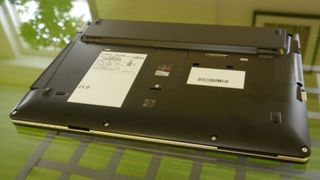
However, we did hit a snag when trying to take out the battery. For some reason, the S936 includes a snap-on cover, an odd option. When we tried to put the battery back, it just wouldn't fit in properly and got jammed. This meant that we couldn't put the cover back on.
Speaking of the battery, the smaller one offered has a 51Whr capacity with a beefier 6-cell model boasting 77Whr and up to 15 hours of longevity. Slot in an optional secondary 28Whr battery and that adds another six hours to an already impressive battery life.
The battery life tests were carried out by Fujitsu using the BAPco MobileMark 2014 office productivity test. A major reason why the S936 excels in mobility is because it uses a screen technology that draws less power.
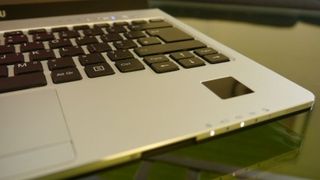
Our model came with a palm vein sensor, a Fujitsu exclusive and one that doesn't require you to touch the sensor in order to unlock your device. A more traditional fingerprint sensor is also available as an option.
Other security features on the S936 include a smart card reader, encrypted disk and a TPM 2.0 module, all of which are staple offerings on high-end enterprise laptops.
The relatively small footprint of the machine means that a 13.3-inch display was the only logical choice with a full HD model or a WQHD one, with touch and anti-glare offered as options.

Our model came with an Intel Core i7-6600U CPU (2.6GHz, two cores, 4MB cache), 8GB of RAM, a 128GB M2 SSD, a 4G LTE modem, 802.11ac Wi-Fi, Bluetooth 4.1, NFC, Windows 10 Pro and a list price of £1,200 (around $1,600, AU$2,090) excluding VAT. As with other Fujitsu laptops, this one comes with a two-year warranty.
There are also two front-facing speakers and a webcam.
We tested the Fujitsu Lifebook S936 using Cinebench R15, CPU-Z and GeekBench 4. On the first benchmark, it reached 43.9 fps for the OpenGL test and 322 points for the CPU benchmark. CPU-Z yielded scores of 1,597 and 3,597 (Single and Multi-thread respectively) while on the newly introduced GeekBench 4, the notebook achieved 17,749 on its compute benchmark and 3,871/7,560 points on its single/multi-core test.
All these numbers are on par with what one would expect from a Skylake-based Core i7 processor from Intel.
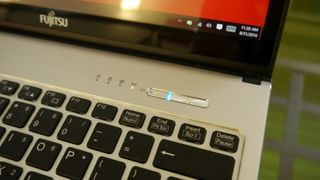
The display, which uses Sharp's acclaimed IGZO technology, was exquisite, on par with the rest of the competition. It boasts great viewing angles, reasonably thin bezels and well balanced colours. The keyboard and the touchpad were equally good – the former offers a reasonable spring and feedback, with massive Enter, Shift and Backspace keys, and great travel.
The touchpad has two physical mouse buttons and while it's not the biggest we've seen on a 13.3-inch laptop, it is accurate and responsive, although we have some reservations regarding its slightly high level of friction.
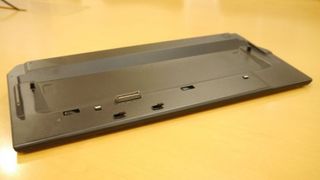
An optional port replicator/docking station, costing £99, is also available and adds an extra USB 3.0 port, DVI and DisplayPort connectors.
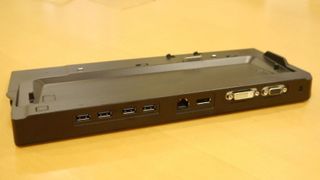
Early verdict
The Lifebook S936 is one of the best designed laptops we've seen in recent years.
Okay, so it's not perfect and is a tad thicker than we'd expect, but removing the artificial limit on thickness gave more leeway to engineers and frankly, the additional 10mm thickness meant more space to fiddle around and a level of expansion capabilities that we've never seen on any laptop of this weight.
Perhaps the only reservation we have is about the battery and its cover; a minor point but one that caused us some problems.
- Check out our round-up of the 10 best Ultrabooks of 2016

Désiré has been musing and writing about technology during a career spanning four decades. He dabbled in website builders and web hosting when DHTML and frames were in vogue and started narrating about the impact of technology on society just before the start of the Y2K hysteria at the turn of the last millennium.
What is a hands on review?
Hands on reviews' are a journalist's first impressions of a piece of kit based on spending some time with it. It may be just a few moments, or a few hours. The important thing is we have been able to play with it ourselves and can give you some sense of what it's like to use, even if it's only an embryonic view. For more information, see TechRadar's Reviews Guarantee.
Most Popular




